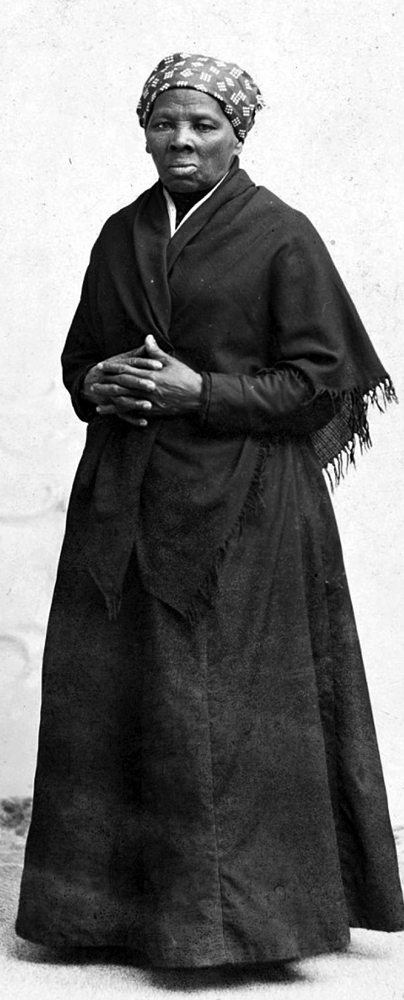
A name not familiar is Araminta Rose who was born in 1822. Her parents were slaves, Harriet Green and Ben Ross. Her maternal grandmother arrived in the United Sates in a slave ship from Africa. She bacome a symbol of American courage and freedom.

Horatio Seymour Squyer photo
We know her as Harriet Tubman, who was born a slave in Maryland. She was beaten and whipped by her masters as a child. She recounted a particular day when she was lashed five times before breakfast. She carried the scars for the rest of her life. But she had spirit and found ways to resist. She ran away for days, wear layers of clothing as protection against beatings and fight back.
Her mother was assigned to the big house as a cook. Consequently as a child she took care of a younger brother and baby, which was typical in large families. When she grew up she was assigned to the field and forest work, driving oxen, plowing, and hauling logs.
Her mother told her Bible stories because Harriet was illiterate. That began her passionate faith in God. After a severe head injury, she experienced epilepsy symptoms for the rest of her days. Her boss said she was “not worth a sixpence” and tried to sell her. She was sent back into the fields, “with blood and sweat rolling down my face until I couldn’t see.”
In 1849 she escaped to Philadelphia and then returned to Maryland to rescue her family. She eventually guided dozens of other slaves to freedom. After the Fugitive Slave Act of 1850 was passed, she helped guide fugitives father north into British North America.
Tubman worked for the Union Army during the Civil War, 1861-1865, first as a cook and nurse, and later as an armed scout and spy. She was the first woman to lead an armed expedition in the war when she guided the raid at Combahee Ferry which liberated more than 700 slaves.
Her father, Ben, was freed of slavery at the age of 45. He continued working as a timber estimator and foreman for the family. Harriet married a free black man named John Tubman in 1844. She changed her name from Araminta to Harriet soon after the marriage. She later wed Nelson Davis and had one adopted daughter, Gertie.
When her owner again tried to sell her she said “There was one of two things I had a right to,” she explained later, “Liberty or death and if I could not have one, I would have the other.” She and her brother escaped and Tubman used the network known as the Underground Railroad. She undertook a journey of nearly 90 miles, traveling on foot into Pennsylvania. It took five days and three weeks.
She recalled the trip later by saying “When I found I had crossed that line, I looked at my hands to see if I was the same person. There was such a glory over everything. The sun came like gold through the trees. And over the fields and I felt like I was in Heaven.”
Over 11 years, she rescued 70 slaves in 13 expeditions. She was at great risk and used a variety of subterfuges to avoid detection. She once disguised herself with a bonnet and carried two live chickens to give the appearance of running errands. Or she would pretend to read a newspaper. Because Tubman was known to be illiterate, others ignored her.
She was a conductor of the Underground Railroad for eight years. She was never captured, nor were the fugitives she guided. She died at age 90 March 10, 1913 and was buried at Fort Hill Cemetery in New York.
Harriet Tubman, a woman of great fortitude and compassion, is remembered as an activist in the struggle for women’s suffrage, for her courage, and for her civil rights activism.

